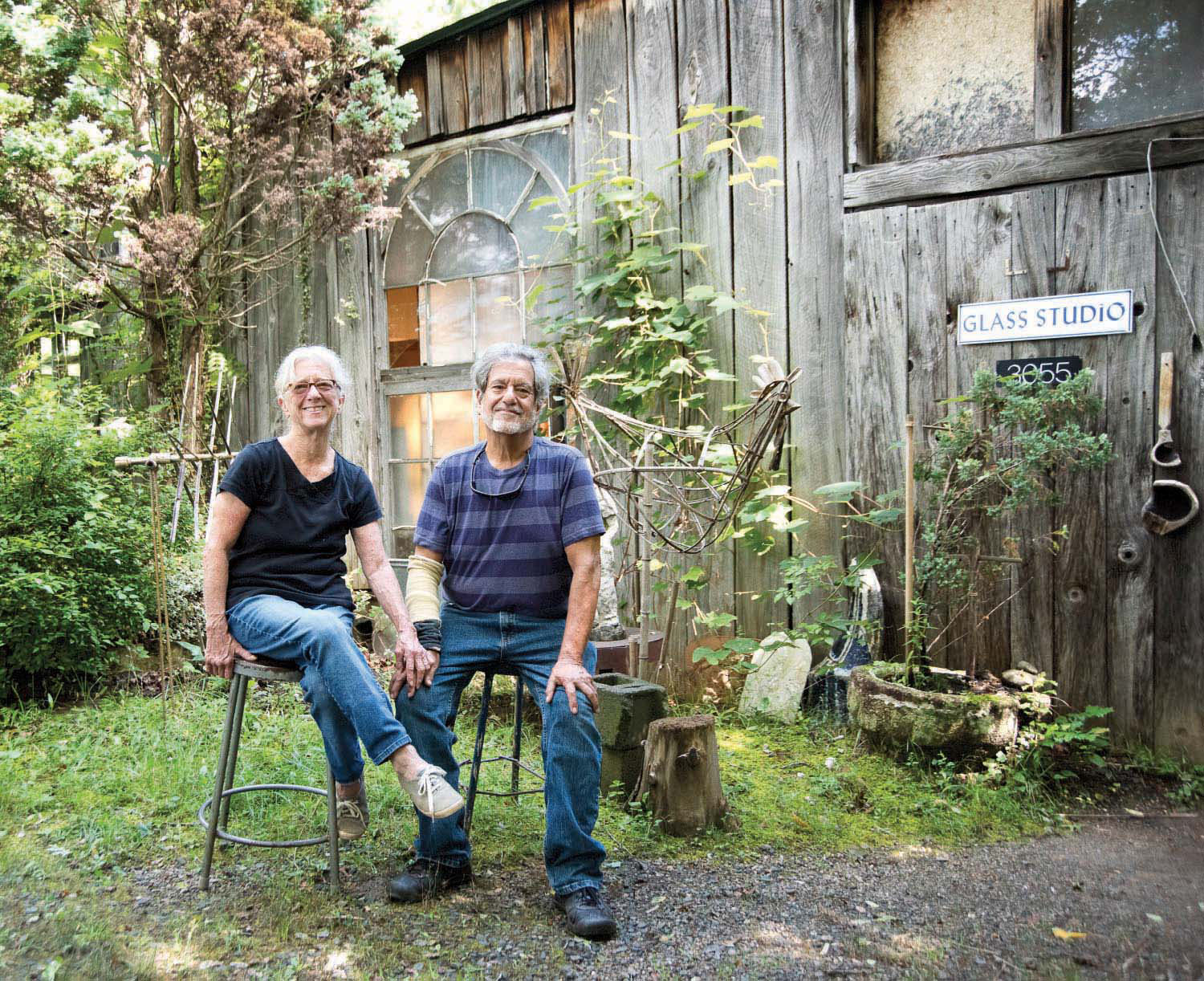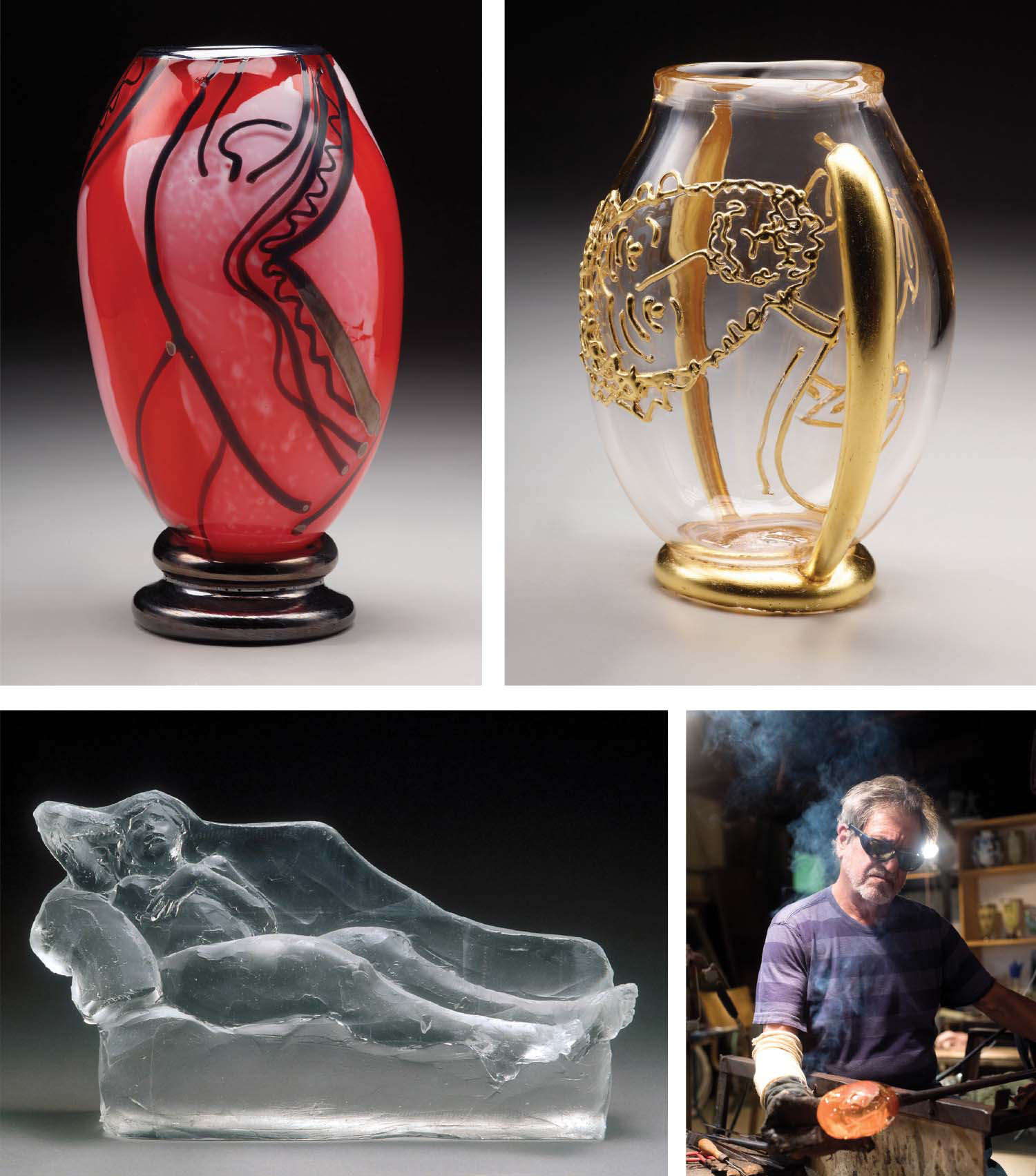
Clay was always too slow for Billy Bernstein. He wanted to see the imprint of his efforts in real time.
“I was studying ceramics in college,” he recalls, “but I was impatient, waiting for the clay to dry or the glaze to be fired. With clay, it might have been weeks before I even got to see a result. But with glass there’s an immediacy and physicality … I was seeing the results by the next day. Glass also has a certain kind of dance or sport to it.”
He decides it’s not unlike what athletes feel when they’re in the performance zone and body, mind, and instinct react in sync.

Meanwhile, Kate Bernstein, Billy’s wife and artistic collaborator, was inspired to take up glasswork thanks to a personal nudge from a master of the medium, the late Harvey Littleton. Described by the Smithsonian as the father of the studio-glass movement in the United States, Littleton grew up in the glass center of Corning, NY, and founded the glass program at the University of Wisconsin. His influence on Kate was transformational. She vividly recalls meeting him when he moved permanently to Western North Carolina. “He looked at my ceramic pieces and said, “I don’t know why you’re doing this out of clay. Quit that clay stuff and let’s do it in glass.” He took her clay sculpture back to his studio and came back several weeks later with a completely finished casting of the sculpture in glass crystal. “He gave me this wonderful glass from Corning, and let me use his studio. I loved it.”
Billy and Kate have been on the sharp edge of the high-country arts scene for nearly half a century, proving it’s not just a place for potters. From their rural log home and studio in Yancey County, where they raised their two sons, Alex and Josh, they create a variety of glasswork — sometimes with assistance from Alex, also a renowned glass artist. (Josh is a physician and educator.)
Alex and his studio crew often help Kate grind and polish her translucent lead-crystal figurative sculptures — made from the same material used in optical lenses — after they emerge from the furnace that Alex’s father made decades ago, in true pioneer style. “I built it to my own design specifications, learning by trial and error,” Billy says. “Now it runs continually, using about 1,000 gallons of propane per month.”
Billy is also a painter, and his own glasswork reflects his penchant for bold color. He often paints human faces onto functional vessels, using thin rods of colored glass called cane. “We use a small handheld torch,” he explains, “and draw with it on glass. You have to work quickly, while the tips of the rods or canes are still in a molten state.” When the glass is blown into its final shape, the artwork rendered onto it expands around it as part of the finished form.
Although they met in art school in Philadelphia, the Bernsteins attribute much of their creative development to their residencies at nearby Penland School of Crafts and their continued involvement in that scene. “Penland is the reason we’re here,” Billy declares. “We both feel as though it’s our real alma mater.”

Self portrait in gold, by Billy Bernstein. Photo by Steve Mann (top right) ;
Reclining Woman, by Kate Bernstein. Photo by John Littleton (bottom left) ;
Photo by Morgan Ford (bottom right)
Bernstein Glass, Burnsville. For more information, call 828-675-4854 or see bernsteinglass.com. The Bernsteins are represented by Ariel Contemporary Art + Craft Gallery in downtown Asheville. 19 Biltmore Ave. 828-236-2660. www.arielcraftgallery.com. Their work is also featured at Penland Gallery at Penland School of Crafts (penland.org).
Love your garden and your work, keep it up!
You re the best. I was there during this very exciting and enriching time. Glass, what it is publically, has certainly changed but Penland will always hold it s memories and roots in the baby beginnings of what now is passion for the material and the product. For me though, it was just the experience, the entire Penland experience. Penland changed my life.